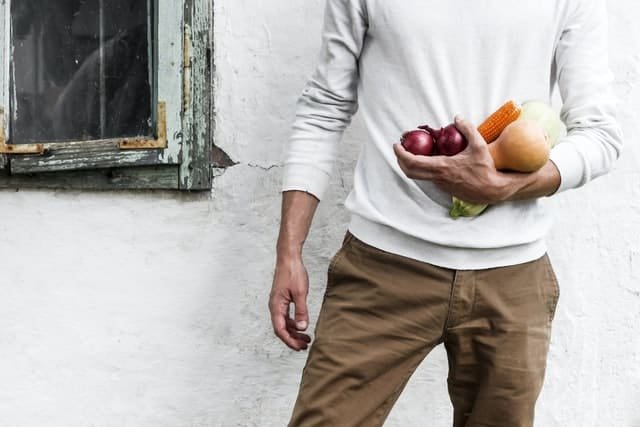Being Vegan Doesn’t Have to be Expensive

One of the main objections to any method of healthy eating is that it costs more than a “fast food lifestyle”. It’s not that fresh food is more expensive, it’s the huge subsidies that are given by Governments that make processed food much, much cheaper coupled with the savings of frozen food.
The truth is being Vegan , or any type of food plan can be more – or less – expensive to stick with, depending on how much effort you’re willing to put in. More effort in = Better results!
If you refuse to cook your own food and want to exist completely on restaurant meals, Uber Eats, takeaway then your vegan lifestyle will likely cost you quite a lot.
Financial advice company Cleo found that, after three months on the diet, meat eaters who go vegan end up spending £21 less per month on eating out and groceries. However, vegetarians who opted to go vegan ended up spending £11 more per month.

But if you’re truly serious about knowing exactly what’s in your food, you’ll want to cook most of your meals at home. And that’s the key to eating tasty vegan food on a budget.
Many of the basic staple foods in the vegan diet are very inexpensive when cooked at home, including beans, legumes, grains, and seeds. Some of the most well-known vegan dishes are budget-friendly recipes using inexpensive ingredients in creative ways. Think of vegetable curries, pasta dishes, bean chili, vegetable stir-fries and the wide variety of soups available; all of these are tasty and inexpensive vegan favorites. The key is in the way you prepare your meals each week.
Prepping Your Own Vegan Meals
Restaurant and fast food meals are quick and convenient, sure, but they’re filled with ingredients you don’t want to eat – or come at an unbelievably high price. The key to avoiding this dilemma is to prep your own meals at home so that you’ve got your own vegan fast meals ready on those nights you just can’t face a long session of cooking after work.
Spend one hour each Saturday (or whatever day is the best for you) prepping a family-sized portion of your favorite dishes. Do eight servings of vegetable stew one week, and a giant pot of soup the next. Have one serving for dinner that night, then store the rest in individual containers in your freezer. After a couple of months, you’ll have a nice variety of budget vegan meals ready to heat and eat.
Use Smart Shopping Techniques
Planning ahead can save you money as well as time spent walking up and down the grocery aisles. Decide what you want to eat during the next week and make a list of ingredients you need to buy. Use time-tested budget-shopping tips like:
- Buy fruits and vegetables in season and plan your meals around these foods
- Choose frozen vegetables if seasonal isn’t available
- Keep two or more types of bread products on hand, such as wraps and loaves, to prevent food boredom
- Choose a variety of dried beans instead of the canned ones
- Make a list before you go to the store – then stick to it
- Experiment with international cuisines to give your menu variety as well as save money
- Buy extra if you find a great bargain, then store it for later
- Concentrate on buying ingredients and avoid processed foods
- Buy one small item for your backup pantry each week, such as spices, herbs or condiments. After a few months, it will be easier to cook creative vegan meals with whatever you’ve got on hand
You’ll find some more transitioning tips here
Being Vegan Basic Cooking Skills
You don’t have to be the next Gordon Ramsay but the most appetizing dishes are variations on some simple and basic recipes. Once you learn how to make the foundation dish, you can mix and match ingredients to create an almost endless list of tasty vegan meals, all without resorting to restaurant food.
Spend some time online watching cooking videos to find the basic instructions, then practice making the simplest version of each dish. Once you’ve perfected that, let your imagination go crazy.
If you learn a basic stir-fry technique, a way to make soup, the basics of pasta sauces, a good standard rice bowl recipe and a way to make an elaborate salad, you’ll have the building blocks for hundreds of tasty and inexpensive vegan meals.
Depending on where you are in the World will dictate how you chop/prep food. In Asian cooking it’s normally the thrust cutting technique often used with Japanese knives, in place of a rocking motion which is commonly used by Western chefs.






Responses